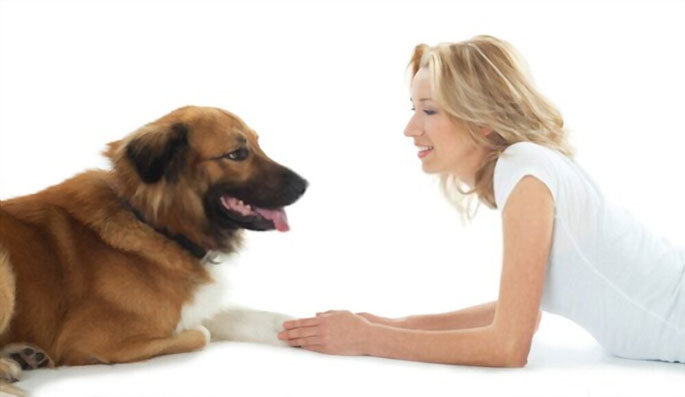
Unfortunately, our dogs can’t speak to us. They cannot say when they are hungry, need to go out to the toilet, want to play, or even feel scared or in pain.
However, while they can’t talk, they have other ways of letting us know how they feel. They do this through facial expressions and body language – each one communicating what they want us to know.
As pet owners, we need to understand what each one means so that we can fulfill the dog’s needs.
Firstly, this means knowing when your dog is feeling happy, unhappy, and anxious. According to the RSPCA, these are the behaviors to look out for:
Happy:
- Wagging tail
- Smooth hair
- Relaxed, open mouth
- Ears are relaxed
- Bottom raised to play
- Barking
Unhappy:
- Ears are up
- Hair raised
- Tail raised and stiff
- Teeth showing
- Growling
Anxious
- Head lowered
- Avoiding eye contact
- Tail tucked under
- Ears back
- Licking lips
- Yawning
- Whining and howling
Read More:
- Dog Talk: How Important Is To Understand Your Dog’s “Language”
- Tips for Adopting a Dog When You Have Small Children
- 5 Effective Tips on How to Get Your Dog to Sleep in His Own Bed
- How to Get a Puppy to Sleep Through the Night?
- Top 10 Ways That Your Dog Shows You Love
- Can Dogs Talk? What One SLP Is Doing To Prove They Can
Dogs are believed to have about 19 different signals that they use to communicate with us. Of course, all dogs are different – you’ll get to know and understand your own better than anyone else. It would be best if you also considered which actions are being used together and the situation’s context. But, here are a few to look out for:
Paw: If your dog raises their paw – particularly if they then touch you with it, they want attention and your focus to be on them. They will keep pawing until you acknowledge them. They likely want you to play with them. But, your furry friend could also be telling you it’s time for dinner or their walk – check the time, it probably is. However, they may even be asking for forgiveness – perhaps they have just done something they shouldn’t and can tell you are cross. They will also do this when seeking comfort.
Exposing their belly: Dogs often expose their belly to other dogs to show that they are submissive if they feel threatened. However, if they do this to you, while they are still submissive, they show they trust, respect, and adore you – and probably also want a tummy tickle!
Tail: Dogs can communicate a lot through their tail. We all know that a high, wagging tail means a dog is excited (the faster it gets, the more excited they are), and they will do this to show that they are happy to see us. But, a tail doesn’t just signal excitement. If it is tucked under, they feel scared, and if it’s high but stiff, they are alert and showing dominance.
Bowing: A dog bow is known as the play bow. If you have done yoga, you’ll start to understand why it’s called a downward dog. If a dog does this, with their front legs on the ground and their bottom in the air, then they want you to play with them.
Tilt their head: Does your dog tilt its head when you are speaking to them? It’s like they are really trying to understand us, isn’t it? Well, actually, they are. Dogs tend to tilt their head to listen more closely so they can hear and see better – so they can read our expressions. They also do this when they hear a sound they haven’t heard before.
Eye contact: Much like with humans, you can tell a lot by whether your dog is making eye contact with you or not. Humans make eye contact when they are feeling confident and avoid it when they are uncomfortable – this is pretty much the same with dogs. Eye contact from a dog also shows that they trust you and is a way of showing that they love you – by looking back into their eyes, you can strengthen your bond. However, if they don’t look at you, they may well be scared, but they could have also done something naughty – probably worth having a quick check around the house to see.
Lean against you: Dogs will lean against you for security when they feel uncertain, but this is also their way of showing love and affection. It’s their way of cuddling you. This is particularly common with larger dogs who are unable to curl up in your lap like smaller dogs can.
Now you have an idea of what your dog might be telling you with their body language and facial expressions; you’ll be able to start communicating with them much better.
Related Post: Dog Talk: How Important Is To Understand Your Dog’s “Language”



